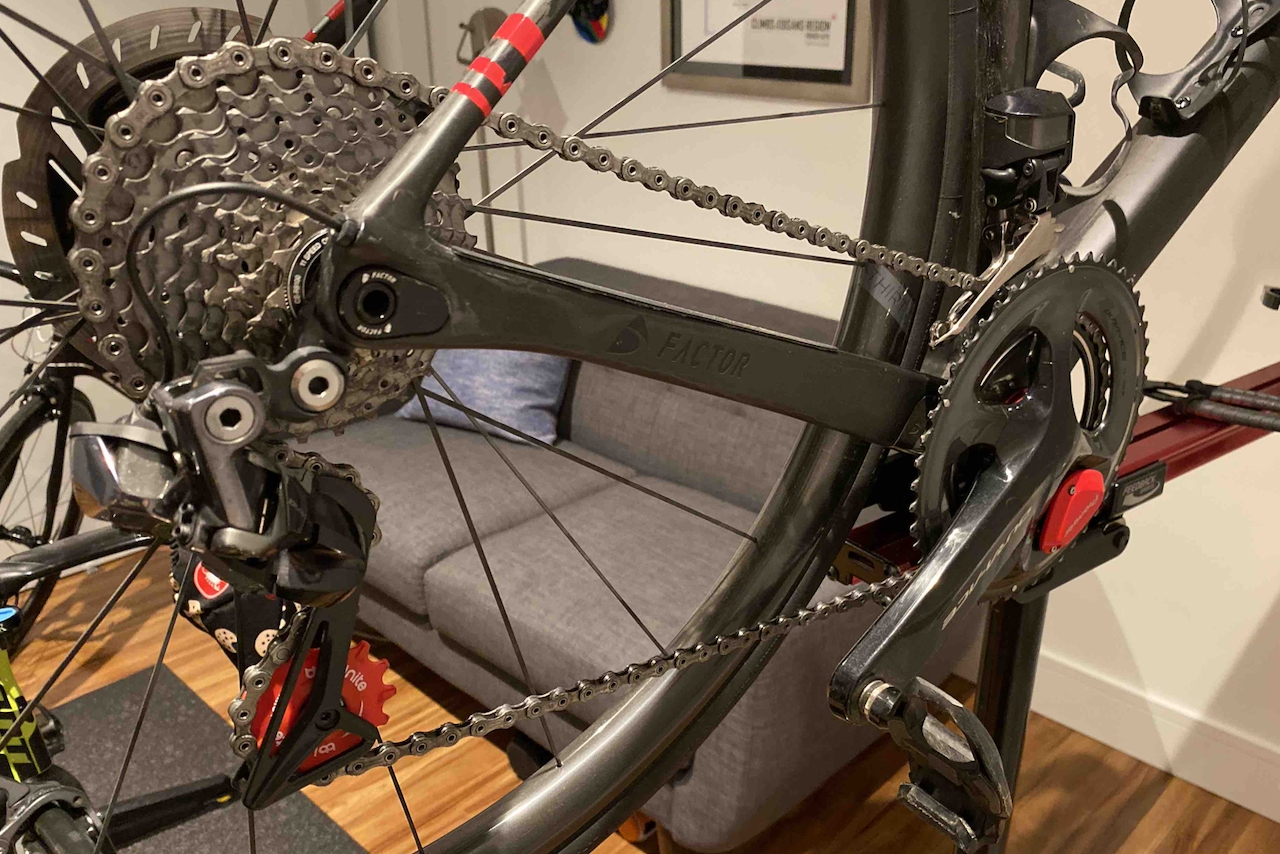
10 Minute Read

10 Minute Read
Components are the bread and butter of your bike. They are what keep you moving and what translates your pedaling into forward movement. While maybe not as important as which frame you should purchase for your first road bike, it’s important to consider them similarly, as well as what cost-conscious decisions can or should be made, depending on your budget.
Bikes are actually quite simple, generally speaking. Even though the newer technology may sound more complicated, they’re typically more simple, with just a few extra marketing terms thrown in. The basic components on the bike are (Amazon links to Shimano Ultegra Di2 versions for reference, since I’m most familiar with them):
Please note that the links above may or may not all line up with your custom build if you’re going this route, so please feel free to contact me if you’d like more information!

If you’re looking for your first road bike, all of these will simply be included on the bike you choose from your local bike shop. Together, the mechanical parts of the above (everything below the pedals), they’re referred to as a “groupset” or even sometimes a “gruppo” if you’re using the local jargon.
In the road biking world, there are three major brands when it comes to components: Shimano, SRAM, and Campagnolo. Each have their own levels as far as perceived quality, named with each of their own product lines.

I say “perceived” because as a novice rider, you’ll likely not notice very much difference between one product line or even brand to another. However, once you become more familiar with a particular brand or product line, you’ll begin to start noticing the differences in more pronounced ways.
In general, the higher in quality you go:
Shimano is the most ubiquitous brand out there, and, full disclosure, pretty much all I have ever ridden outside of bike demos. Their main bread-and-butter product lines consist of what is labeled as “105”, “Ultegra”, and “Dura Ace”, ascending in “level” in that order.
Things get a bit more complicated when you consider their Di2 lines, which introduce electronically-actuated shifting. This is not to be confused with e-Bikes. Perhaps not considered or even known about by those new to the sport, the Di2 system is incredibly well liked within Shimano’s product line, as they just work. Instead of running cables under tension to provide shifting, electronic cables are run instead, relying on a single cylindrical battery that’s placed into the frame somewhere that only needs to be charged every month or so. Those cables send a signal to the derailleurs to shift when needed, and they do so quite well.
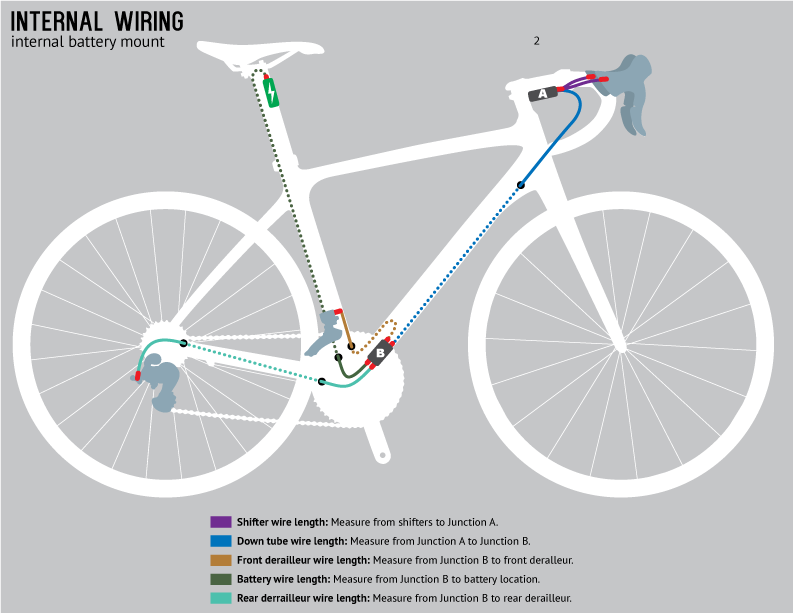
If you’re looking for a new bike that has already been built up and are fortunate to be in a higher price bracket in your search, you’ll often come across choices like going with “mechanical Dura Ace” versus “Di2 Ultegra” because they’re similarly priced. It’s almost always better to go with the Di2 option if you can. Some parts are the same between their mechanical forms and their electronic shifting forms, so you have some options to upgrade things later, of course, but at a typically higher overall cost when factoring in the original cost as well. It’s up to you, though, this is your bike!
I’ve owned both the Ultegra and Dura Ace DI2 set ups, and I’ve been quite happy with them both.
SRAM, I believe, has a lot more hold in the MTB world. They make fantastic quality stuff, too, but do shift a bit differently. The levers are basically the same, but instead of the left shifter shifting the front derailleur like Shimano does, the user presses both the left and right shifter at the same time to shift the front derailleur.
It was weird at first for me when I rode a bike with this arrangement, but I actually found myself making mental “phantom” shifts in my head for weeks after that experience. That single experience really stuck with me, and I may seriously consider their system in the future.
SRAM’s recent large claim to fame was being the first road set up to not only introduce completely wireless shifting with their eTap system (not even cables are run in the frame), but also the first 12 gear (cassette) arrangement, called AXS (pronounced “axis”). This also was unique because the ratios used (i.e., number of teeth on both the front crankset and the rear cogs) departed from what has been considered pretty normal for the last several years.
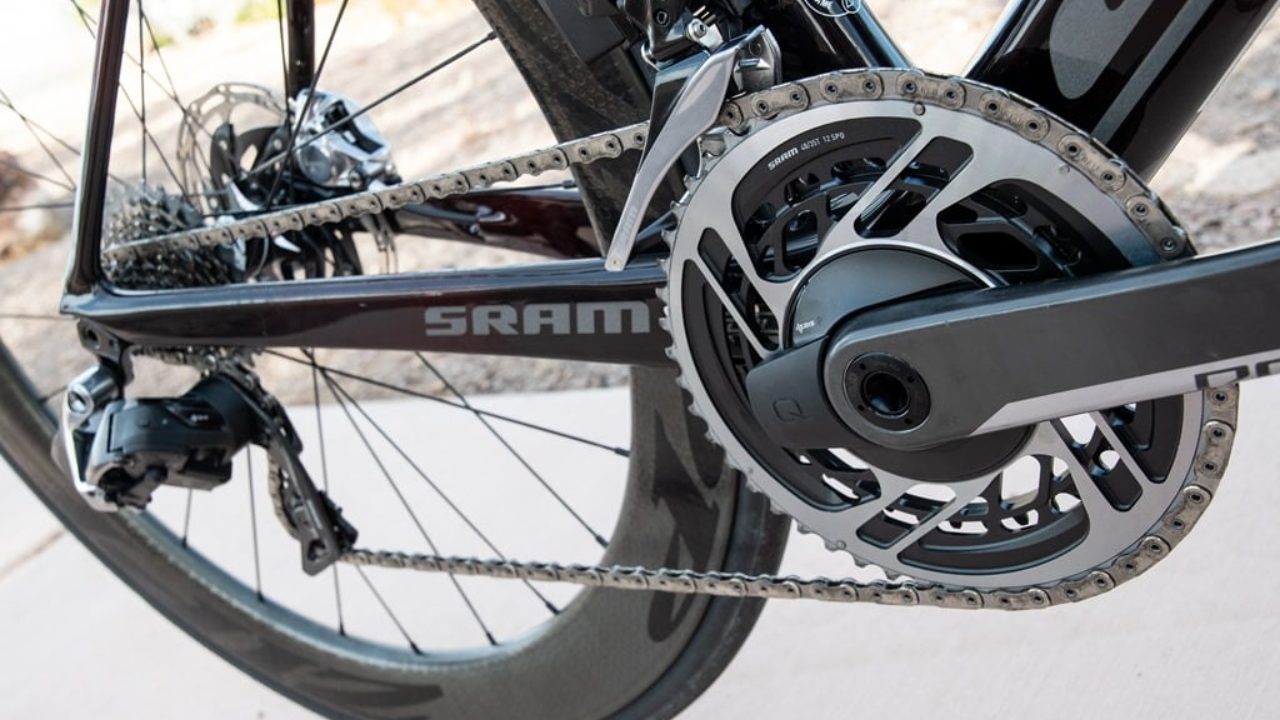
Campagnolo is a very traditional, Italian brand. What makes them unique beyond simply their incredible heritage, is the different way that you shift in a “Campy” system. It has a thumb shifter that may be foreign to people (like myself) who are more familiar with Shimano or SRAM.
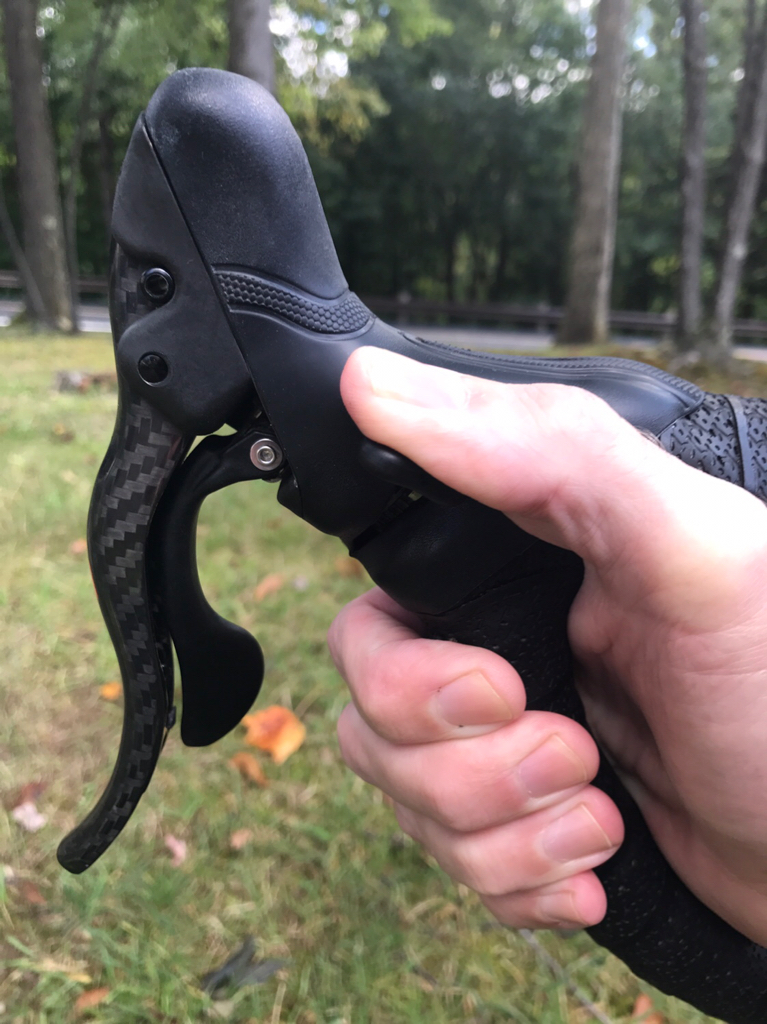
It’s very interesting stuff, and people who are fans of Campy will often swear by them and be very die-hard fans. They especially like the idea that shifting has a very satisfying “clunk” to it and you can dump up to about 3 gears in a single action. I personally struggled with it a bit, as my hands are a bit on the smaller side, so reaching up to that thumb shifter from the drops can be a bit of a stretch.
So while they’re known in the industry as being amazing for their mechanical group sets (a term for a complete set of components on a bike), they’re unfortunately still lagging behind the other brands when it comes to electronic shifting.
Again, not going to get into the debate that exists between rim braking and disc braking, but as mentioned previously, you’re not able to “upgrade” your frame to disc brakes if or when you decide to do so. So you should make the decision earlier rather than later.
“Rim” brakes use calipers that stretch around both sides of the wheels and they literally grip the rim of your wheel to slow you down. “Disc” brakes have a concentrically placed disc rotor (attached to the center / hub of your wheel) that a small caliper grabs instead of the rim to slow you down. Since the rotor is attached to the center hub of your wheel, it slows down the bike very efficiently and there is less concern about heat build up on long descents.
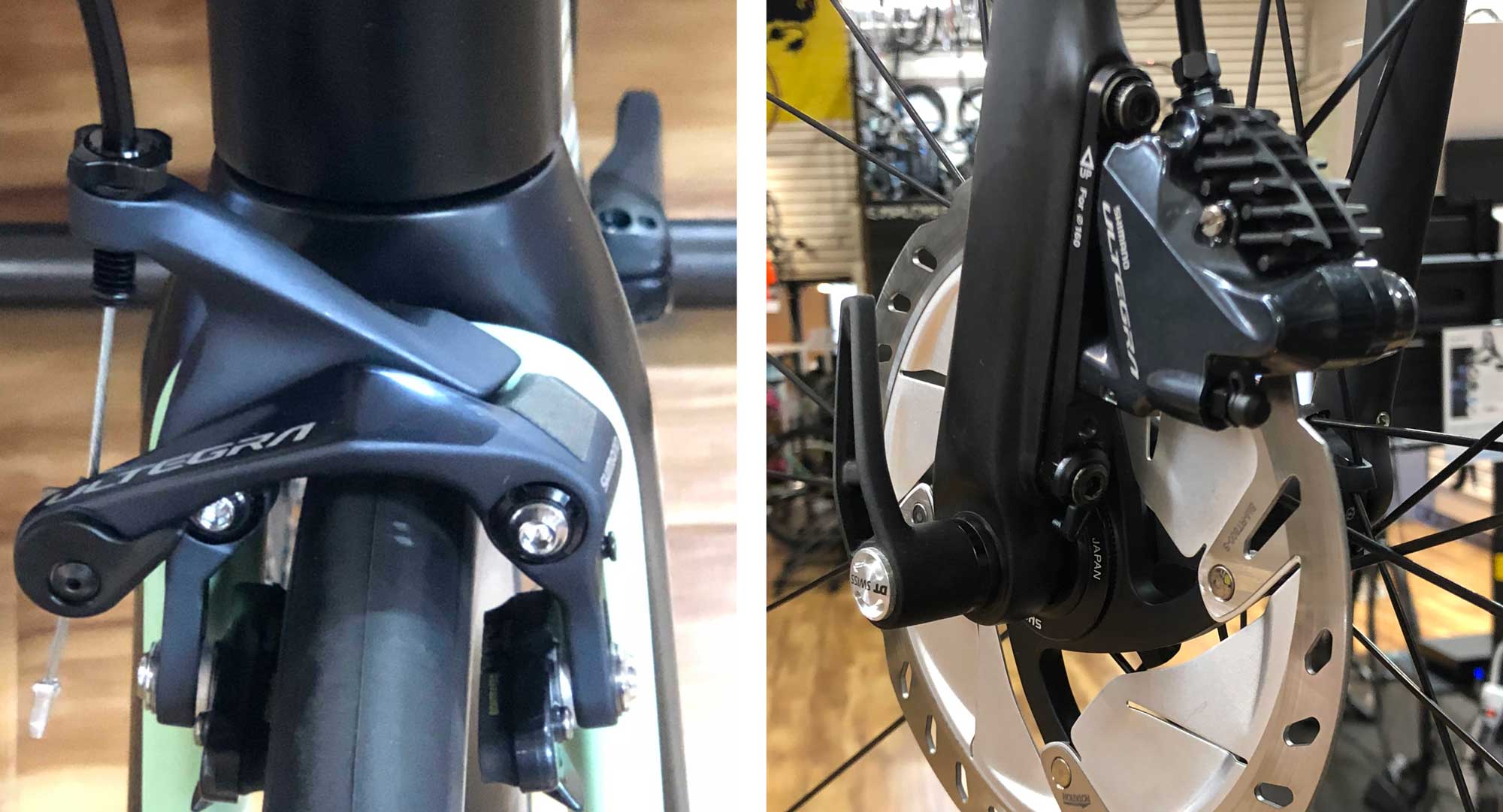
I mention it here because if you’re considering building up a bike with parts, there are actually two lines of disc brakes - one uses mechanical wires / cables that pull the caliper pads around the disc rotor, while the other actually uses hydraulic fluid in tubing to accomplish the same task. Hydraulic is definitely easier to pull, and is quite noticeable, even while wandering the aisles of your local bike shop.
These days, even compared to just ten years ago, it’s pretty difficult to justify spending a lot more money (sometimes $1000 or more) to jump up to the next level of quality group set. GCN actually did a video some time ago where the presenters attempted a blind test to compare Shimano’s top of the line Dura Ace group set to their more middle-of-the-road 105 groupset. Turns out they couldn’t really tell as much of a difference as you would think!
This is due to bike parts manufacturers applying a “trickle down” principle to new tech, as last year’s Dura Ace typically is showcased on this year’s Ultegra.
This gets people caught up a bit, too, as this was how things used to be classified when it came to buying a new bike. These days, while important, the number of gears is less important to the gear ratios you have between your gears.
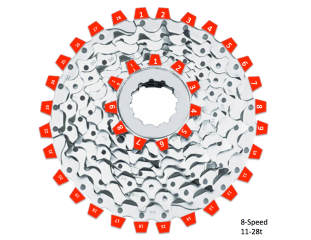
Basically, the more teeth you see available on a cassette, the more chain length you have to use per rotation of your wheel, which roughly translates into “more spinning, less speed, easier to climb”. So, how many teeth are available on both the rear cassette gears and the front crankset (in total) will influence how you ride a lot more than the number of gears you have.
Gear ratios is an interesting topic that I will likely write about later, but suffice it to say, in 2020, bikes are typically either 11 speed or 12 speed, depending on if they’re the newest of the new.
I know I said I wouldn’t get into it, but as a first time buyer of a bike, it’s best to stick with some basics as far as gearing go.
If you ever go back and watch old cycling footage (a great example is Marco Pantani’s famous Alpe d’Huez record), you’ll see a lot of the pros standing over the bars, hammering on the pedals to go up those hills. But if you watch newer footage, you’ll see less of this by comparison. This is mainly due to gearing technology changing in the last few years to favor larger cogs that allow a rider to spin the pedals faster up hills by comparison.
Don’t worry too much about this yet if you don’t follow, once you get out on the road a bit, you’ll start to make sense of it in a way that’s suited to you.
Getting back to the bike purchase, I’ve found that bikes are often sold to you as having “Ultegra” when in reality, only some of the components on the bike are Ultegra. Other parts will work just fine with them, but are of different manufacturers or different levels in quality.
In fact, that’s what happened to me when I got my first road bike - I was sold on it having Ultegra, but I had a few random parts on there like an Oval branded crankset. Did it work just fine? It sure did, but if you’re a bit of a perfectionist or maybe a little OCD, it may eventually bother you and make you want to upgrade the mis-matched parts.
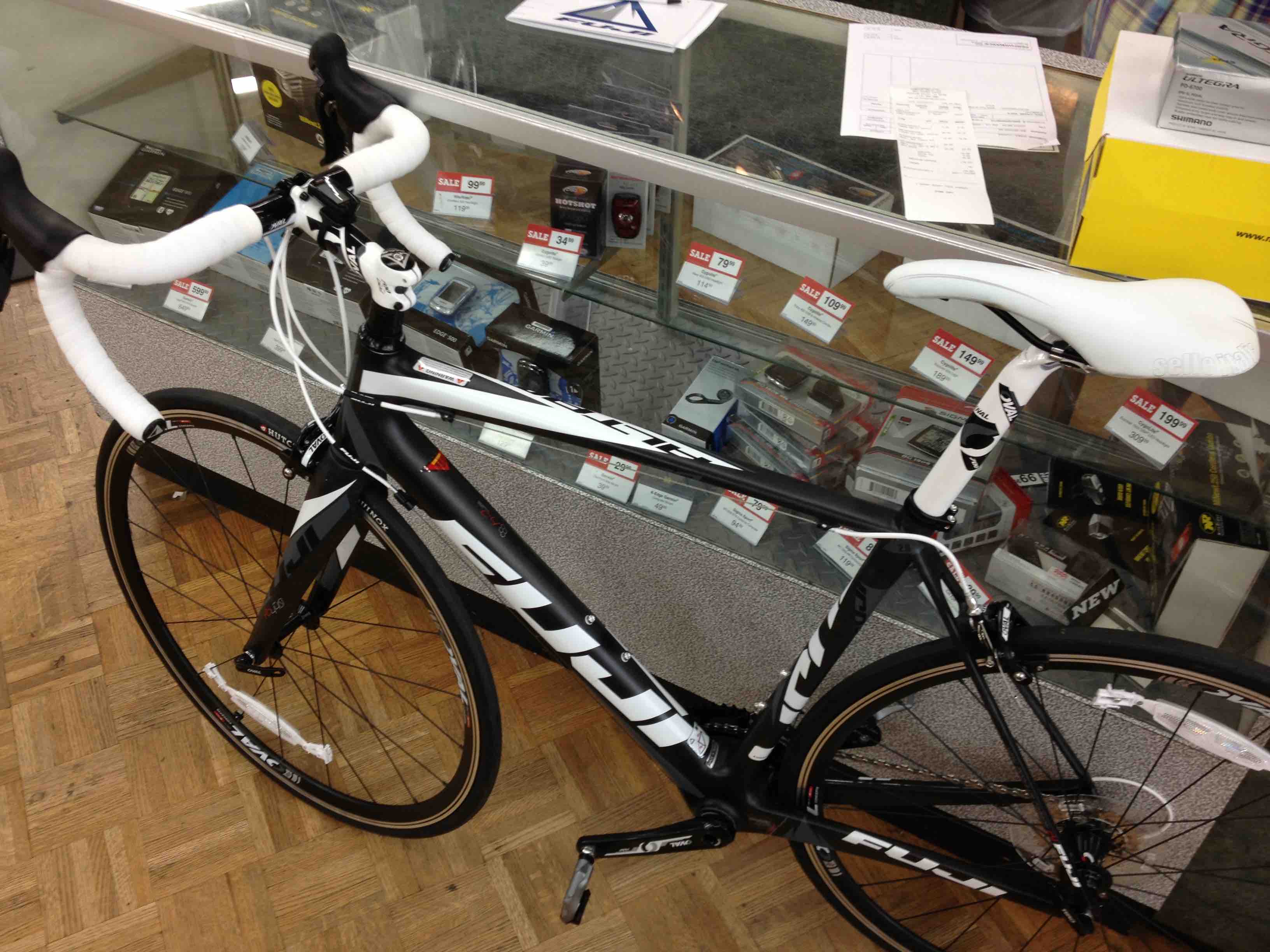
It’s best to look over the details of the bike you’re considering pretty carefully to make sure you know what is put on the bike as it is being sold to you. This can not only apply to the brands and product lines, but also to things like the specific gearing that may not be a good fit for you.
So while it’s not some kind of nefarious plot, it’s just something to be aware of when it comes to you spending your hard-earned money on your new road steed.
Now that we’ve talked about frames and components, can’t we just buy the damn bike already? Well, sure, but let’s make sure we’re aware of some marketing stuff first in the next (and last) post.
